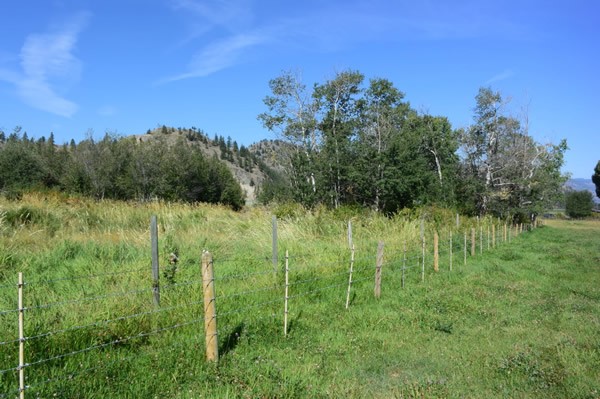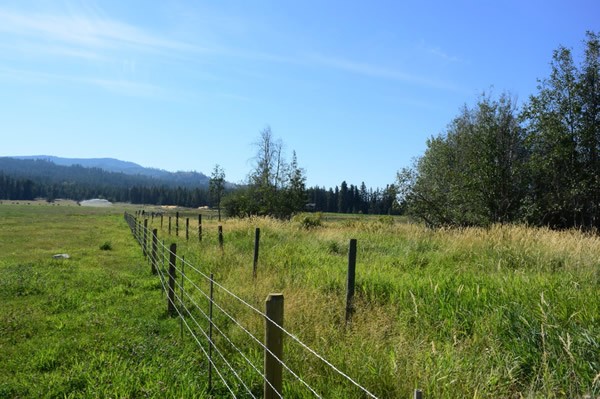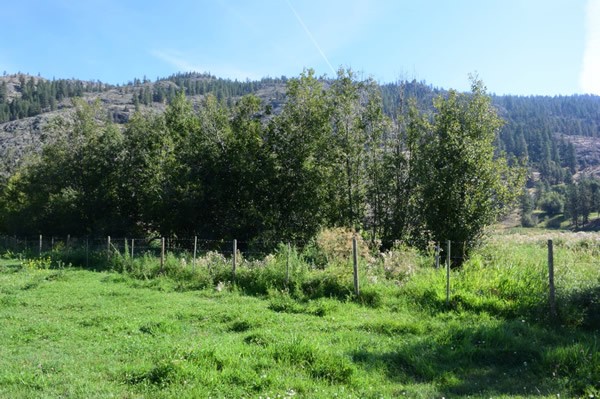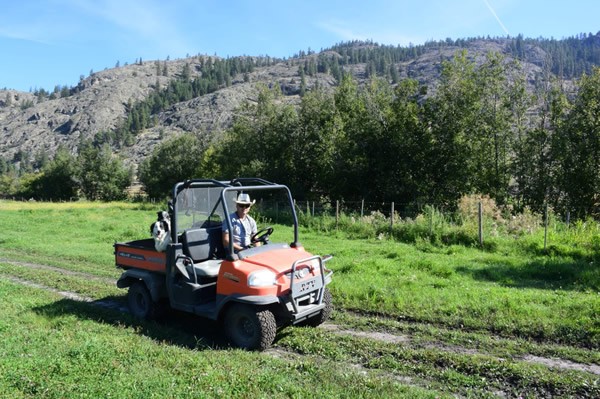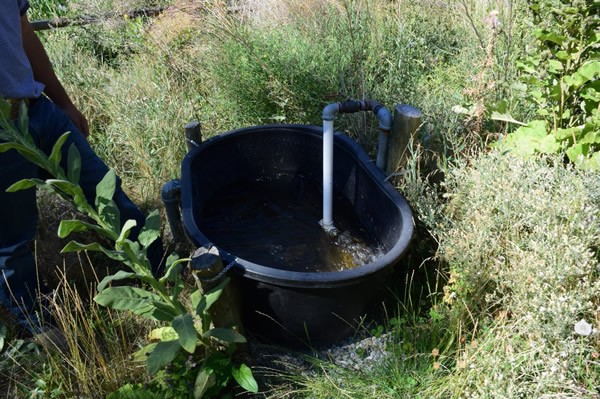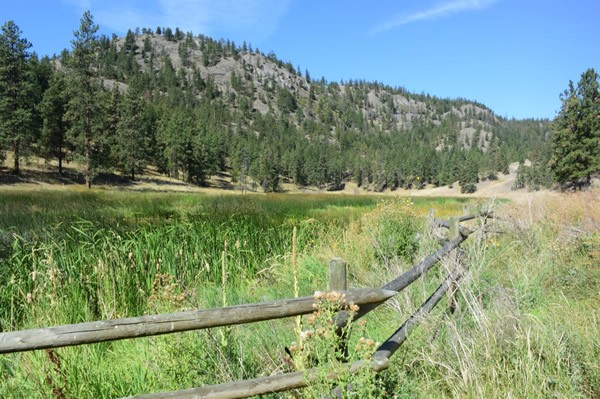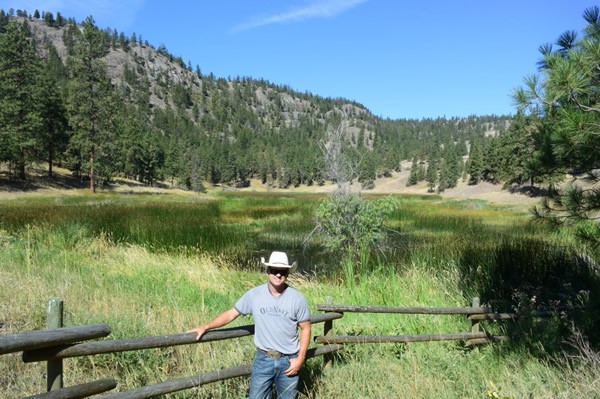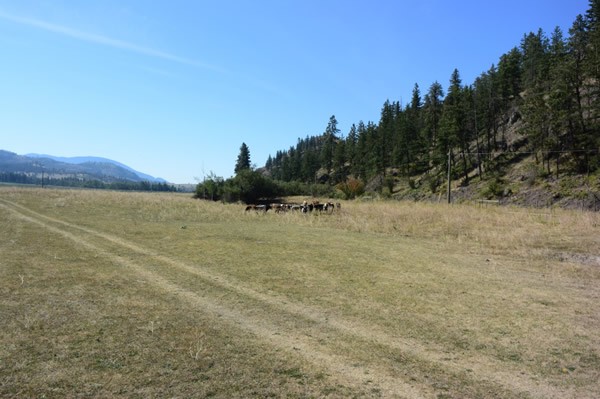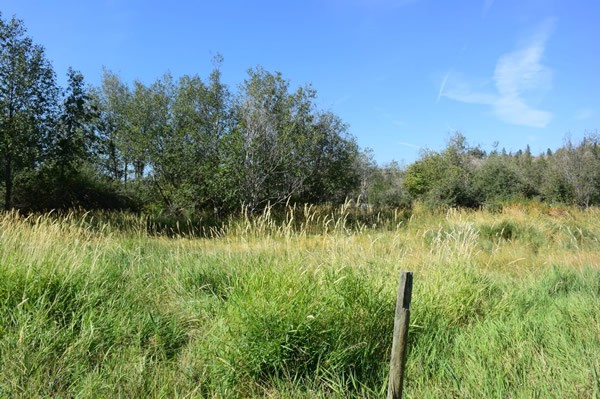Site Description
Name of the site: Okanagan Falls Biodiversity Ranch
Address: Okanagan | Okanagan Falls
Size: 1600 acres (Nature Trust), 90,000 acres (crown range)
Type of production: Cow-calf and operation (couple hundred to 1,000 head)
Owned property: 7 years
“If you are running a successful business operation, often I’ve found that the land is well looked after, because that’s in your best interest.”
~Ryan Culligan
Stewardship Practices Guides
The following guides are relevant to this project site
- Riparian Areas in Settled Landscapes
- Guidance for Restoration Activities in Riparian Areas
- Drainage Maintenance in Agricultural Waterways
Click to download the table for stewardship practices at the Okanagan Falls Biodiversity Ranch
Stewardship project partner:
Project Overview:
Ryan and Erin Culligan and The Nature Trust of BC (TNTBC) work together to manage the Okanagan Biodiversity Ranch. Ryan and Erin ensure that the ranch remains a working ranch, while the TNTBC focuses on their core mission of protecting the “natural diversity of wildlife and plants.”
The day to day running of the ranch, the livestock and the irrigation, are my assets, while they [TNTBC] own the land. We have a 25-year lease agreement, and from my standpoint I want to be environmentally sustainable but I also need to be financially sustainably. We’re going into the end of our 7th year here and things have been going well.
The Nature Trust of BC has spearheaded multiple riparian protection projects on the property, often assisted by the Culligans. The Biodiversity Ranch has close to 5 kilometres of riparian fencing protecting these sensitive habitats. The fencing projects include fences on both sides of McLean creek and a fence around a large man-made wetland. The wetland is partially fed by an off-site water development Ryan installed. The water development allows the cattle to access water, while the fence prevents them from spending too much time in the wetland.
Key Stewardship Actions
- Protect riparian areas through fencing projects
- Created riparian wetland area
Champions
Ryan and Erin Culligan.
Motivation
The partnership with the Nature Trust of BC, allowed Ryan to expand his ranching operation in an area where property is very expensive.
For me it was an opportunity to expand my operation, because land costs are extremely high, and to run some cattle you need land. Nature Trust provided me with a launching pad to get started.
Completing riparian protection projects and working with TNTBC is also motivated by Ryan’s belief that when “running a successful business operation” looking after the land is “in your best interest.” In the case of a ranching operation, he also thinks that healthy land and water are necessary to run a profitable operation.
At the end of the day if you haven’t got healthy pasture lands and healthy water on your ranches, you are not going to be profitable.
Ryan thinks the success of the partnership is a result of both parties understanding each other’s goals and an attempt to keep things simple.
I think that the biggest thing that is a positive for our agreement, is that we try to keep things simple. We don’t like to get too complicated and we don’t like to get in each other’s hair too much. We both understand our goals on the place.
Challenges
Ryan does not think there are many challenges working with The Nature Trust of BC (TNTBC) and completing riparian protection projects and is happy with the relationship
I think we have a good working relationship. Both parties try to do what they feel is best, for the land and their interests. I think it kind of goes back and forth.
There are some small costs to working with TNTBC but Ryan views these as the cost of doing business. For example, their agreement with TNTBC prevents them from fencing off all of the pasture which they irrigate and fertilize. Bighorn sheep can eat some of the hay they produce on the land, but Ryan enjoys seeing the sheep and finds the cost acceptable.
There are maybe some costs in the fact that the [bighorn] sheep generally eat our third cut of hay so that’s a cost that we take, because whether or not we have a deer fence we still irrigate it and fertilize to try and get that hay. So that’s a cost but it, we kind of like seeing the sheep too. We understand that because we are ranching in a place called Nature Trust, that’s just the cost of doing business.
Trespassing has been an issue for Ryan and he thinks it might be because “some people feel like because its Nature Trust land it’s a free for all.” The numerous private property signs do not seem to deter people from trespassing. Because of the sheer quantity of “ATVers, motorbikers, trail riders, hikers, and mountain bikers” Ryan finds it difficult to use some of the property for his cattle. He thinks that it is a minority of the people coming onto the property that cause a nuisance.
A lot of our neighbours they like seeing the cows and realize that this place is being run as a ranch. Even if they are out here, they respect the fact that there are gates and things of that nature. And then there are certain people that kind of view it as if the cows are in their way. They can be the ones that are a hassle to deal with. Same old story, I think that 90% of people are pretty good, people work together and realize that we all have different interests out here, and then there is that 10% that can just really get you in a foul mood.
Outcomes
The partnership between The Nature Trust of BC and the Culligans has been successful at protecting and enhancing many riparian areas at the Biodiversity Ranch.
A fair number of acres that have been protected since we’ve been here. Rankin Spring, we fenced off, we did a riparian area across the way on a man-made reservoir, and created a riparian area, McLain Creek we’ve fenced and made access points for livestock, and [inaudible] there is an existing fenced off area that we’ve maintained.
Ryan has noticed that immediately after riparian areas are fenced off the reed and slough grass recover quickly. However, he also noted that in the longer term weeds can become a problem in these protected areas requiring control.
Generally in the areas that were just grass that the cattle had been grazing on, and then fenced off, the reed grass and the slough grass just comes back, and it looks quite nice, it gets tall and looks good.
The partnership between the Culligans and TNTBC and the associated stewardship practices has resulted in healthy populations of bighorn sheep and deer. The ranch also provides habitat for many species at risk, including the Lewis Woodpecker.
There is a lot of wildlife here. We have a good bighorn sheep population and mule and white tail deer. We also have [Lewis] wood peckers.
For other ranchers interested in doing similar projects Ryan thinks a good place to start is the completion of an Environmental Farm Plan. Completion of the program also allows producers to access funding to help complete some of these projects.
One of the best things to do to get started is to do an Environmental Farm Plan. Sometimes just having a look at what you’re doing will make you see places to improve. Often if people recognize it, people will do it. I think most ranchers have that pride in their ownership of the land.
Stewardship Practices Menu
Learn more about Species at Risk
Stewardship Practices Case Studies
Fraser Valley & Lower Mainland Sites
Kootenay Sites
Okanagan Sites
Vancouver Island Sites
Contact Information
Find us on social media
LinkedIn: @StewardshipCentreBC YouTube: @stewardshipcentreforbc1047 Instagram: @StewardshipBC

